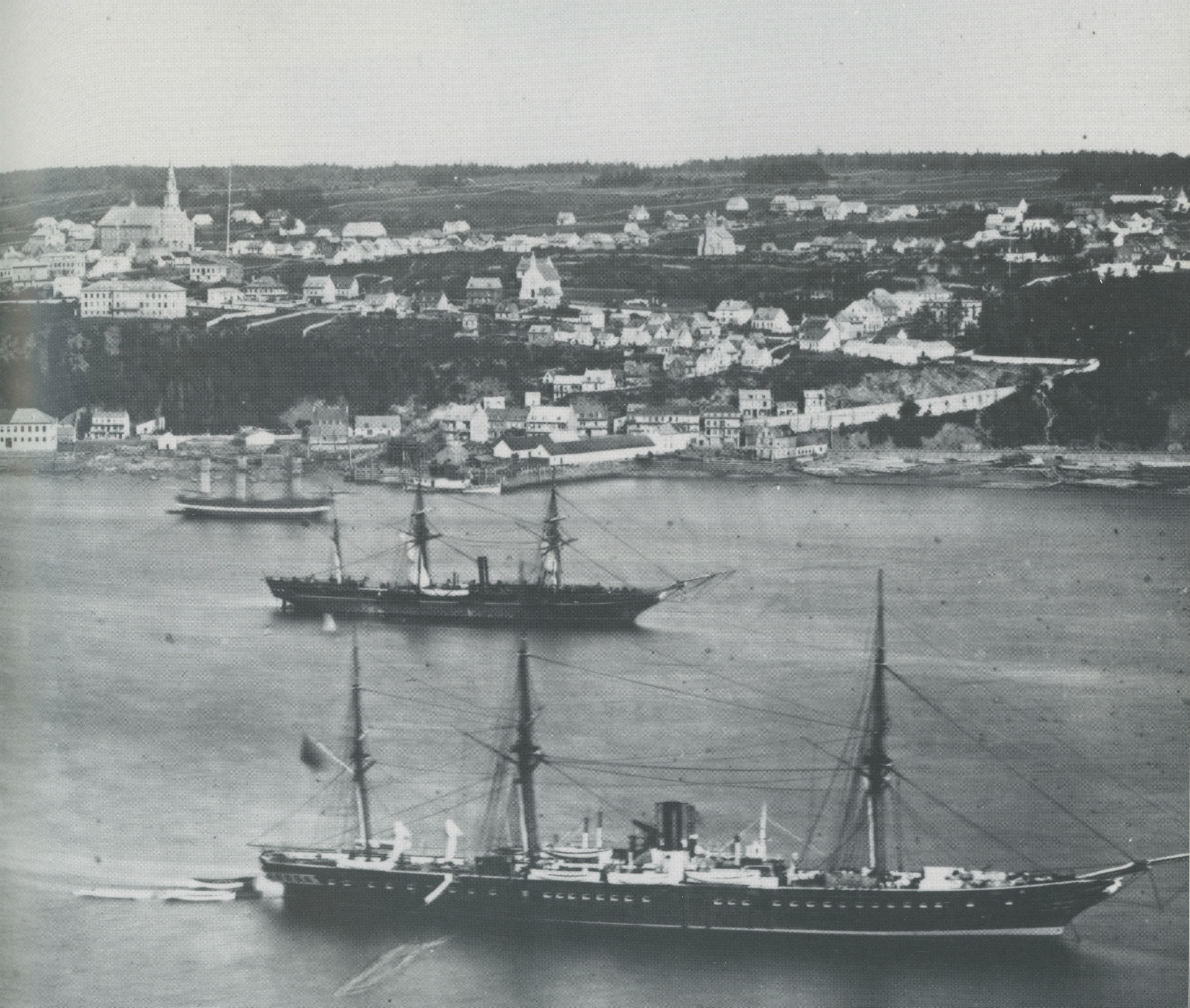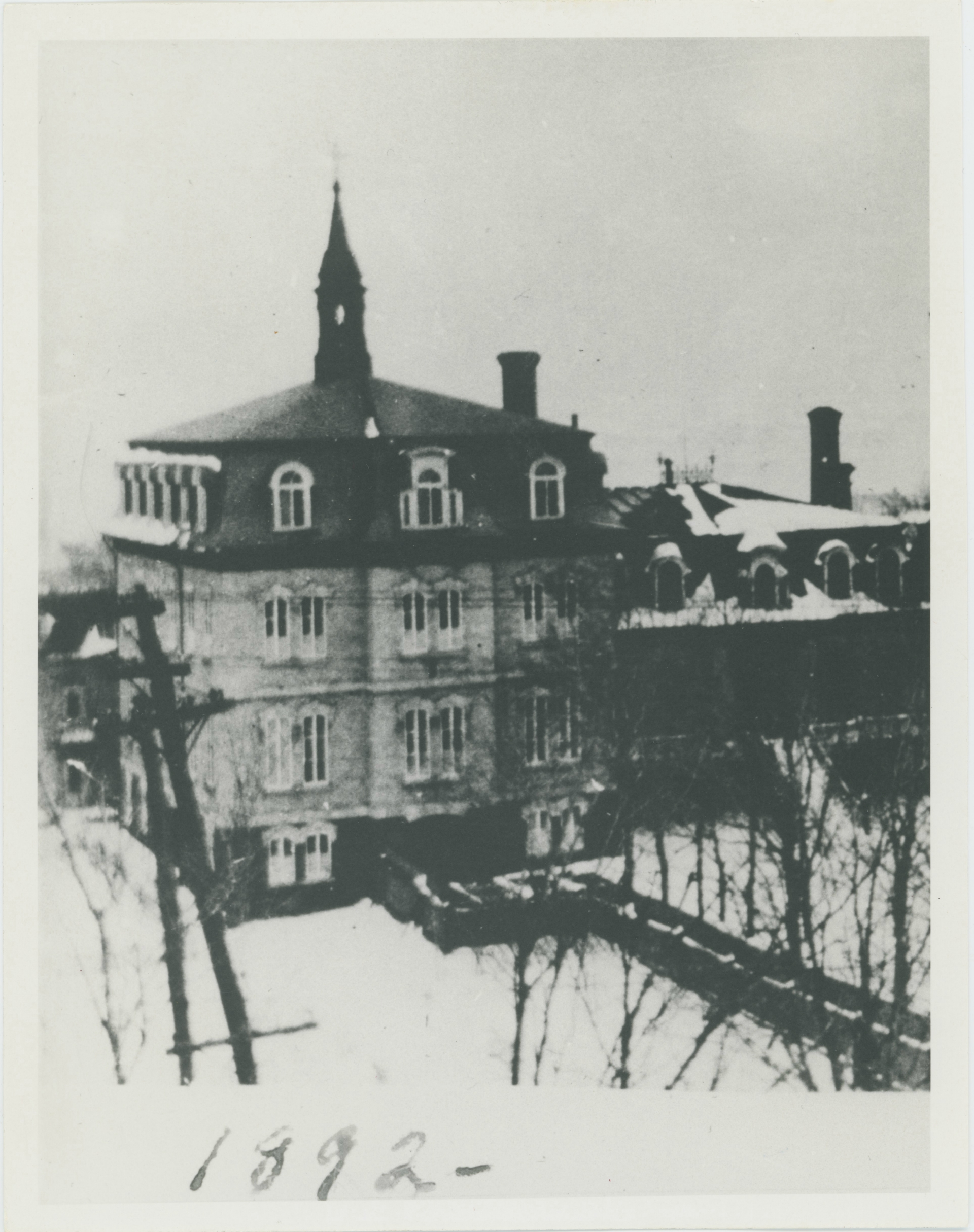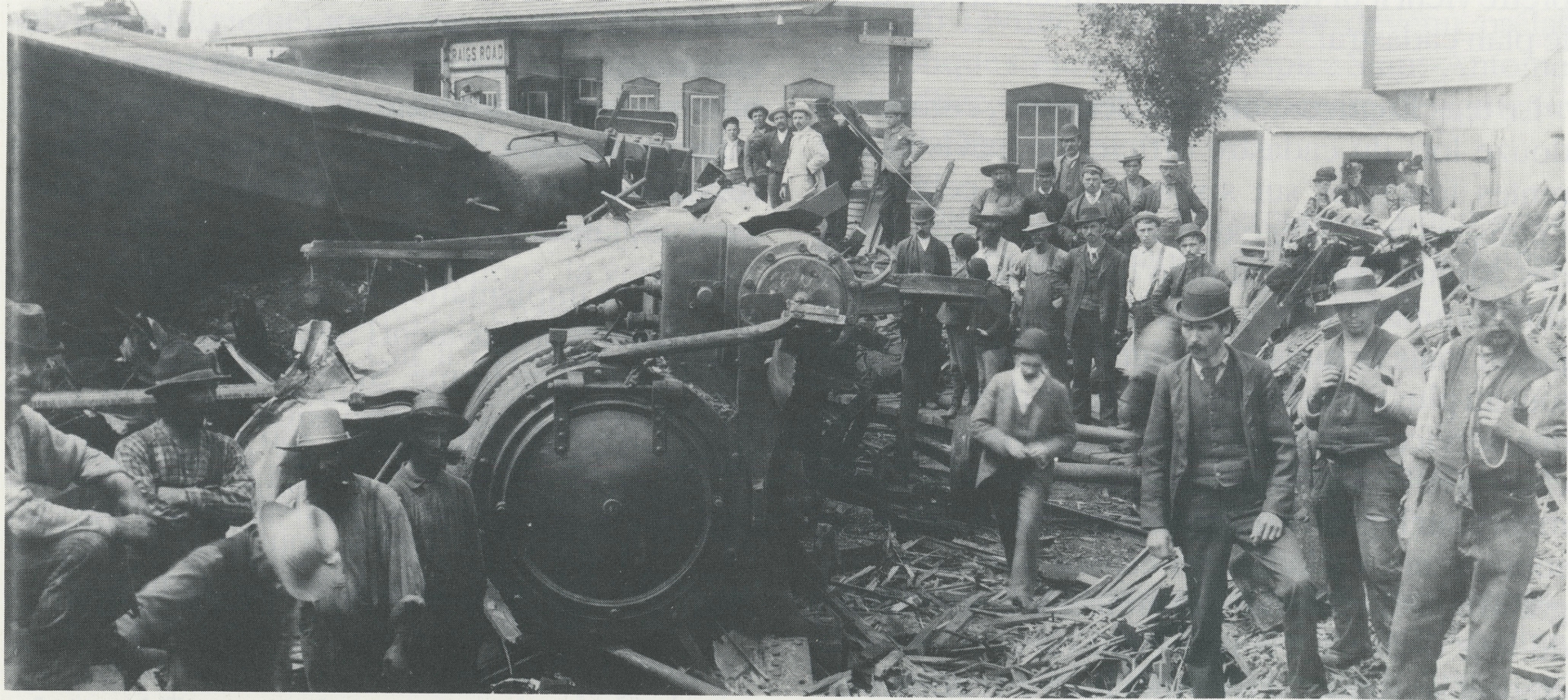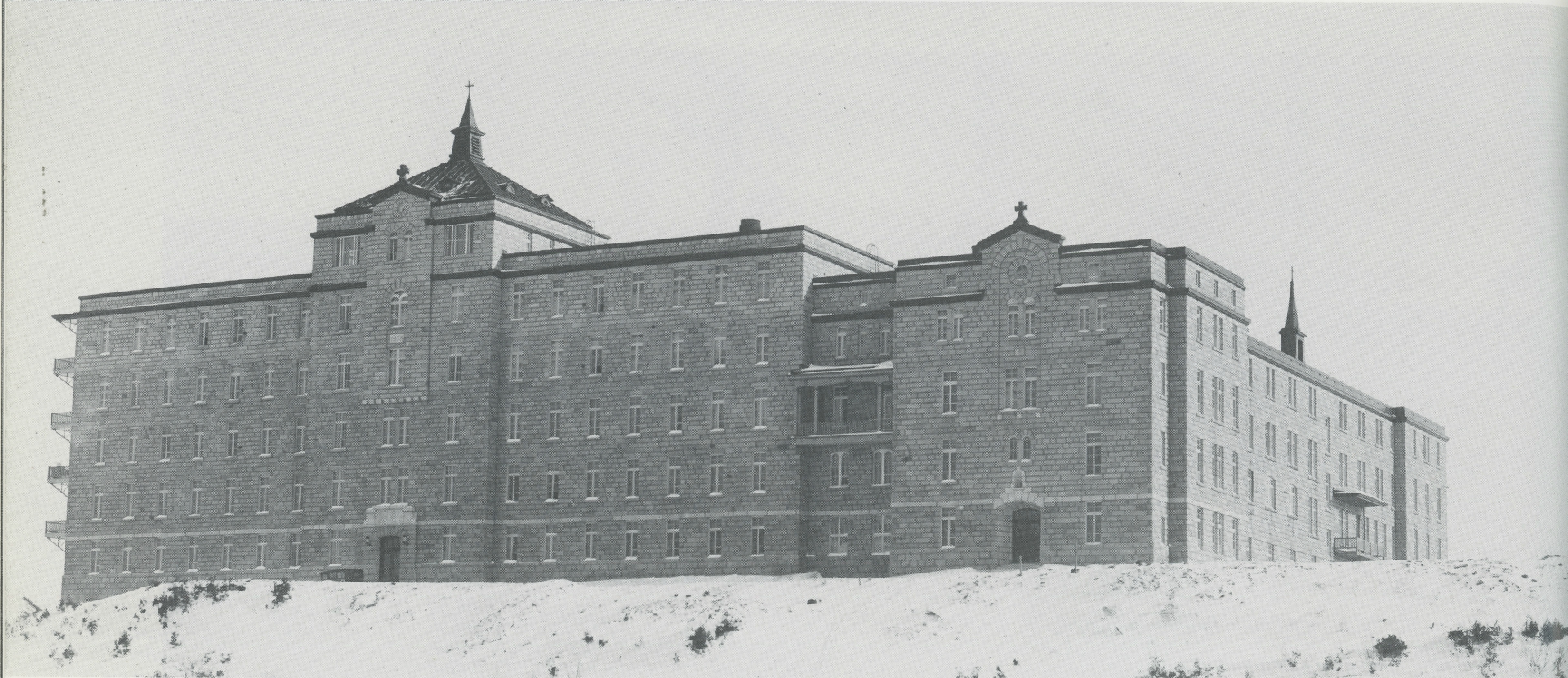An Expanding Region: The Foundation of Hôtel-Dieu de Lévis
At the turn of the 1890s, the Augustinian Sisters were deeply rooted in Québec City. In 1873, the Hôtel-Dieu du Sacré-Cœur was added to the two other sites that already existed, the Hôtel-Dieu de Québec and Hôpital général de Québec. A few Augustinian Sisters from the Hôpital général even invested in new regions when they founded the Hôtel-Dieu Saint-Vallier de Chicoutimi in 1884 and the hospital in Lévis in 1892. The community was growing. To better understand why the Augustinian Sisters founded new hospitals, let’s examine the history of the one in Lévis.
An expanding region
Lévis was growing at a rapid rate during the late 19th century. The arrival of the Grand-Tronc railroad in the Anse Tibbitts sector in November 1854 lead to an economic boom on the south shore of Québec City, which was just a few years before the Notre-Dame-de-la-Victoire parish became the city of Lévis in 1861. The railroad also helped the area’s maritime activity to quickly grow, much to the detriment of Québec City. From a demographic standpoint, the impact of the railroad and maritime activities was important, because in 1861, Lévis was the third largest city in the province after Montréal and Québec City[1].
Before the end of the 19th century, Lévis was already a city with a lot of services and businesses. As more and more companies were established in the city, the number of accidents and injuries also increased. Faced with unprecedented economic and demographic growth, local officials realized the need for healthcare services—not only for the population of Lévis but also the over 20 000 people who lived in the surrounding regions of Bellechasse, Montmagny, and Beauce[2].

© Collection Archives du Séminaire de Québec
A much-needed hospital
A hospital had to be established to offer much-needed healthcare services to Québec City’s south shore. It is notably thanks to determination of Mgr Antoine Gauvreau that the Hôtel-Dieu de Lévis was initially founded under the name of Hôtel-Dieu-du-Cœur-Agonisant de Jésus. In March 1887, Mgr Gauvreau asked the Augustinian Sisters of the Hôtel-Dieu de Québec to cross the St. Lawrence River and oversee the management of the hospital. This project placed lot of pressure on the staff at the Hôtel-Dieu de Québec, who were inundated with the needs of the local population. Not having a hospital in Lévis was also a problem for people on the south shore that had to go to Québec City to get care. At the time, the only way to get across the St. Lawrence river was by steam boat (or the ice bridge in the winter). The Québec Bridge was not completed until 1917 after many challenges and the death of nearly 100 people[3]. Québec City and Lévis were far from the debates about a third link that are occurring today!
Despite these growing needs, the population of Lévis were initially not convinced that they needed a hospital. They did realize that it could become difficult to support all the charitable organizations that were growing in the city, such as orphanages and hospices. Nevertheless, Mgr Gauvreau finally convinced even the most adamant sceptics.
The new hospital also inherited the home and land of Caroline Lagueux, a woman in Lévis who died in 1891 but bequeathed her property to the project. This specific bequest served to establish the monastery and hospital[4].

© Archives of Le Monastère des Augustines, Fonds de l’Hôtel-Dieu de Lévis
The Augustinian Sisters at Hôtel-Dieu de Lévis
The Augustinian Sisters arrived in Lévis on October 30, 1892. Six sisters from the monastery at the Hôtel-Dieu de Québec crossed the St. Lawrence River: Philomène Lemoine, Henriette Beaulieu, Olympe Chouinard, Léa Lajeunesse, Séraphine Marcotte and Honora Shea. Here is how a journalist from Lévis described the event:
What a touching scene to see six nursing nuns, who took vows of obedience, leave their cloister on orders from their Mother Superior and travel to a foreign place to come to the religious and medical aid of those in need. Their devotion inspires them to help others[5][6].
Sister Philomène Lemoine, also called Sainte-Thérèse-de-Jésus, was the Mother Superior in Lévis from 1892 to 1898, 1901 to 1907 and 1910 to 1913. She was at the forefront during a train accident in 1895 that caused 14 deaths and placed a lot of pressure on the Hôtel-Dieu de Lévis. Sister Nativa Routhier described how this major event unfolded:
Thirty-four injured people were brought to the Hôtel-Dieu de Lévis. […] We had to find room for all the patients. Every available space in our hospital rooms were used, but it was not enough. […] The novitiate was transformed into a sick bay for women. The Sisters even gave up their beds and mattresses to the poorly injured. […] The newspapers covered the July 9 accident in great detail and the Hôtel-Dieu de Lévis was often in the headlines. Until then, the small hospital was only known to local residents in Lévis. All of a sudden, the hospital was put into the spotlight; Hôtel-Dieu de Lévis became known by people on both banks of the St. Lawrence River as a place where the sick and injured could be cared for[7][8].

© Collection Archives nationales du Québec
Successive expansions
With the arrival of even more ill people, many quickly came to the conclusion that the home bequeathed by Caroline Lagueux was too small for the local population’s ever-growing needs. A first annex was built; construction started in 1898[9]. However, the region’s needs kept increasing and, at the beginning of the 20th century, the hospital was, yet again, too small. The hospital was sold to the École apostolique Notre-Dame de Québec, which was an educational institution to train future priests[10]. In 1929, the doctors and Augustinian Sisters began working in a brand-hospital that had 234 beds, which was much more than the 20 beds that the initial hospital had in 1892. The monastery could house 125 nuns[11]. In 1965, the hospital underwent further development at a time when Québec hospitals were being modernized[12]. The Augustinian Sisters’ population started to dwindle. The monastery in Lévis was closed in 1997.

© Archives of Le Monastère des Augustines, Fonds de l’Hôtel-Dieu de Lévis.
***
The ever-growing needs in healthcare for residents on the south shore of Québec City caused a rapid development of the Hôtel-Dieu de Lévis. Initially, the hospital was modest when the Augustinian Sisters arrived in 1892. However, thanks to their dedication and perseverance, the hospital evolved into what it is today: a major hospital centre with 349 beds.
[1] Michel Lessard, Une belle histoire… Hôtel-Dieu de Lévis. 1892-1992, Hôtel-Dieu de Lévis, 1992, p. 10.
[2] Ibid., p. 10-11.
[3] GAGNÉ, David et Alain FRANCK, “Québec-Lévis: Dialogue interrives”, Continuité, no 116, Spring 2018, p. 51-53.
[4] LESSARD, Michel, op. cit., p. 14-15.
[5] « Quel spectacle émouvant que celui de voir six bonnes sœurs hospitalières qui, ayant fait vœu d’obéissance, quittent leur cloître sur l’ordre de leur supérieure pour aller porter ailleurs, dans une place étrangère encore pour elles, les secours que leur dévouement leur inspire de donner : secours religieux, secours médicaux. »
[6] Cité par Michel Lessard, Ibid., p. 10.
[7] « Trente-quatre blessés furent transportés à l’Hôtel-Dieu de Lévis. […] Il fallait loger tous ces blessés. Toute la place disponible dans les salles fut employée, mais cela ne suffisait pas. […] Le noviciat fut transformé en salle des malades pour recevoir les femmes. Les religieuses donnèrent même leurs lits et leurs matelas pour accommoder les pauvres malades. […] Les journaux donnèrent une grande publicité aux détails de l’accident du 9 juillet et l’Hôtel-Dieu de Lévis fut longtemps à l’affiche. Jusque-là, le petit hôpital n’était guère connu en dehors du voisinage immédiat de Lévis. Il acquit tout à coup une notoriété considérable, et dans de nombreux foyers sur les deux rives du Saint-Laurent, on connut l’existence à Lévis d’une maison destinée au soulagement des malades et des blessés. »
[8] ROUTHIER, Soeur Nativa, De la sève à la floraison. L’histoire de l’Hôtel-Dieu de Lévis. 1892-1972, Les Éditions Le Renouveau Inc., Charlesbourg-Est, 1976, p. 60-62.
[9] LESSARD, Michel, op. cit., p. 17.
[10] Ibid., p. 18-19.
[11] Ibid., p. 20.
[12] Ibid., p. 22.

